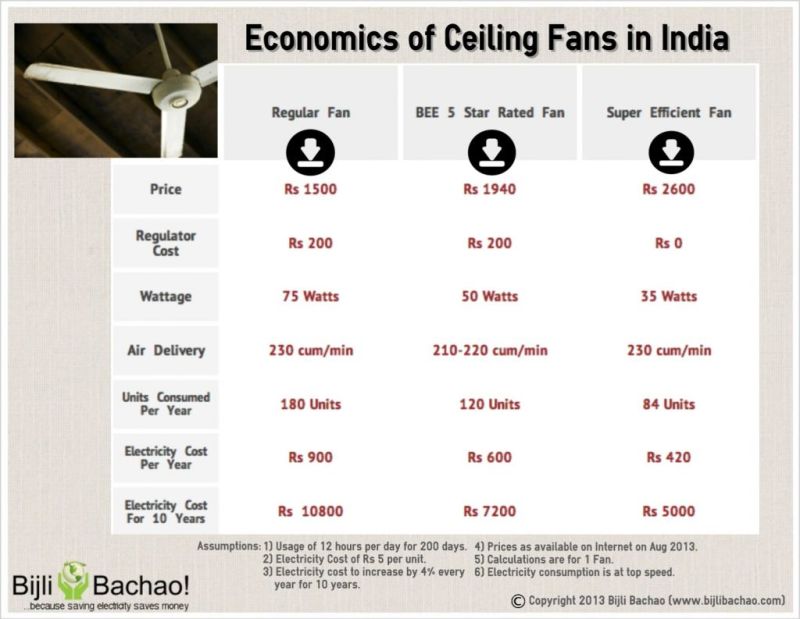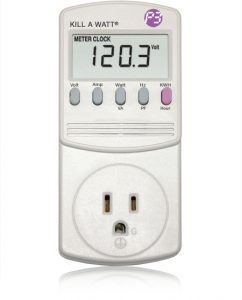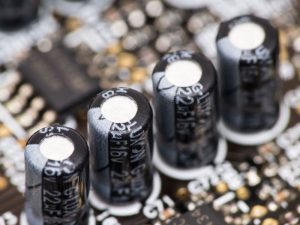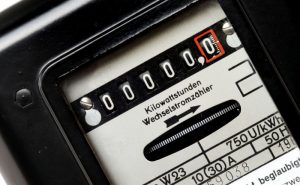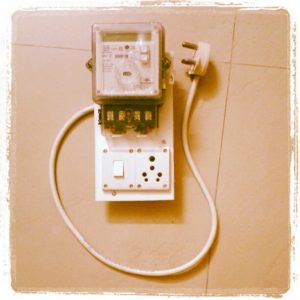Evaluation and comparison of Superfan, a BEE 5 star rated fan and regular fans
Since we started Bijli Bachao, which was almost two years back, we have been experimenting with various appliances and measuring their electricity consumption. At our own home we measured electricity consumption of some of the appliances, replaced them with efficient options and estimated the impact post replacement. One of these is the ceiling fan. We were on regular fans about a year back, when we replaced them with BEE 5 star rated ceiling fans. And just 3 months back we replaced one of the BEE 5 star rated fan with a SuperFan, which is one of the latest Super Efficient Ceiling fan in the market. As we have used all types of fans we thought we should put up a little comparison between the three.
Evaluation of a SuperFan
We got this interesting fan 3 months back and we have been using it well since then. This fan has a Brushless DC electronic motor that is super-efficient. The fan does not need a regulator and works with a remote control (although they have a cheaper model that works without remote as well). In fact if you do not find the remote then it can also work by toggling the switch on switchboard the same number of times as the desired speed. There is a LED at the center of the fan that blinks and shows the fan speed when it is changed. Although a good feature, it can be disturbing at night while sleeping. Although this fan is a little different from other fans, the installation was quite easy and straightforward. We used our energy meter to measure the power consumption and it was as follows:
|
Speed |
1 |
2 |
3 |
4 |
5 |
|
Wattage |
3.8 watts |
7.7 watts |
13.8 watts |
22.7 watts |
35.8 watts |
We did not have anything to measure the air delivery, but it felt as good as a regular fan. Also the air delivery quoted by the manufacturers is the same as that of a regular fan and we had no reasons not to believe them. The video below shows our evaluation of superfan:
Evaluation of a BEE 5 star rated fan
We have been using BEE 5 star rated fans for almost a year now. We have been quite happy with them, as they have certainly helped reducing our electricity bills. Although we have had some challenges with our electronic regulators (which we guess are not the right quality and thus do not alter the speed accurately). These fans are just like regular fans with a slightly efficient motor. As we mostly use our fans at speed of 5, these fans certainly helped us reduce our bills. The manufacturer quoted air delivery of the fan was just slightly less than the regular fan, and although a keen observation of the two fans would make you feel that the fan is a tad slow, but truly the fan did not feel bad on use.
As we had issues with our regulators, we had to measure two of our fans to get to right numbers for power consumption. Here are the numbers:
|
Speed |
1 |
2 |
3 |
4 |
5 |
|
Wattage |
13 watts |
24 watts |
30 watts |
40 watts |
55 watts |
The one big surprise that we got was that the manufacturer rated the ceiling fan at 50 watts, but the measurement showed 55 watts at full speed. Below is the video of one of our observation:
Regular Ceiling Fans
We visited two of our friends’ houses to measure the consumption by their regular fans. One of them has 8-year-old fans that were truly in bad condition. The performance (air delivery) was poor and even the power consumption was high. Below are the measurements of the fans:
|
Speed |
1 |
2 |
3 |
4 |
5 |
|
Wattage |
13 watts |
25 watts |
37 watts |
48 watts |
92 watts |
The other friend has fans that are 2-3 years old. And below are the measurements of his fans:
|
Speed |
1 |
2 |
3 |
4 |
5 |
|
Wattage |
14 watts |
26 watts |
39 watts |
48 watts |
76 watts |
Below is the video of one of our observation:
Economics of Ceiling Fans
Below is an infographic that we published a few days back that can help you understand the economics of ceiling fans.
In case you are interested in doing calculations based on the speed at which you use the fans, then you can use the formula below:
Units consumed = (wattage x hours of usage)/1000
And you can find out cost per unit applicable to you using our calculator: Online Electricity Bill Calculator – For all states in India.
Some Super Efficient Fans in India
About the Author:
Abhishek Jain is an Alumnus of IIT Bombay with almost 10 years of experience in corporate before starting Bijli Bachao in 2012. His passion for solving problems moved him towards Energy Sector and he is keen to learn about customer behavior towards Energy and find ways to influence the same towards Sustainability. More from this author.

